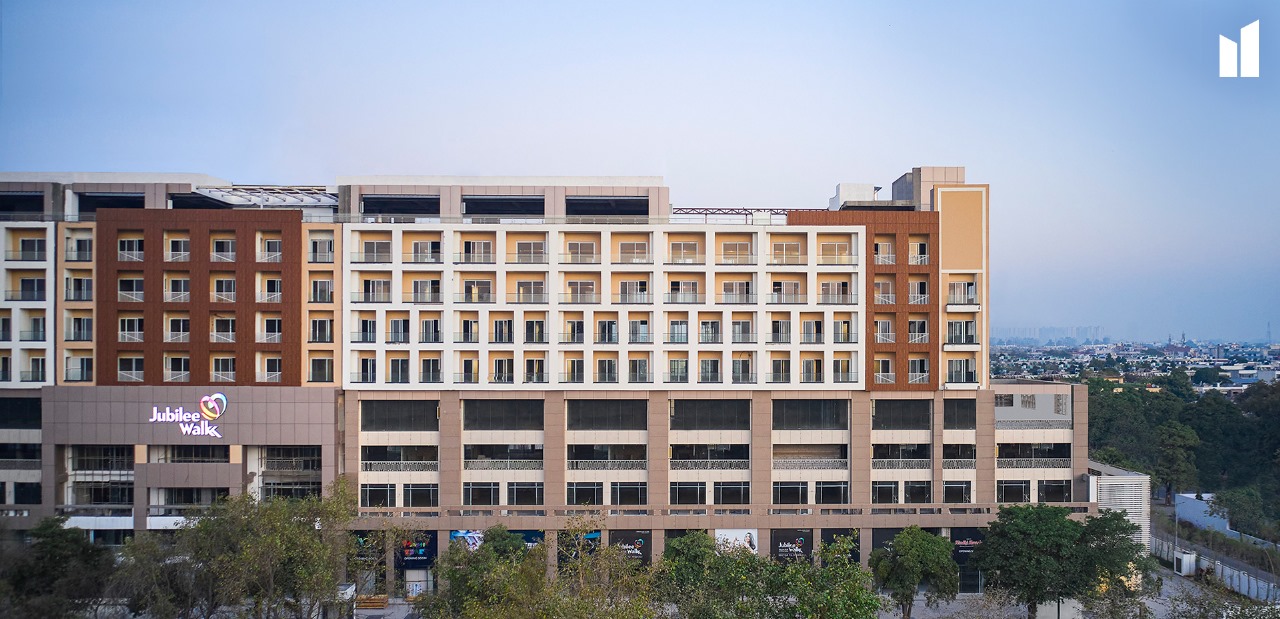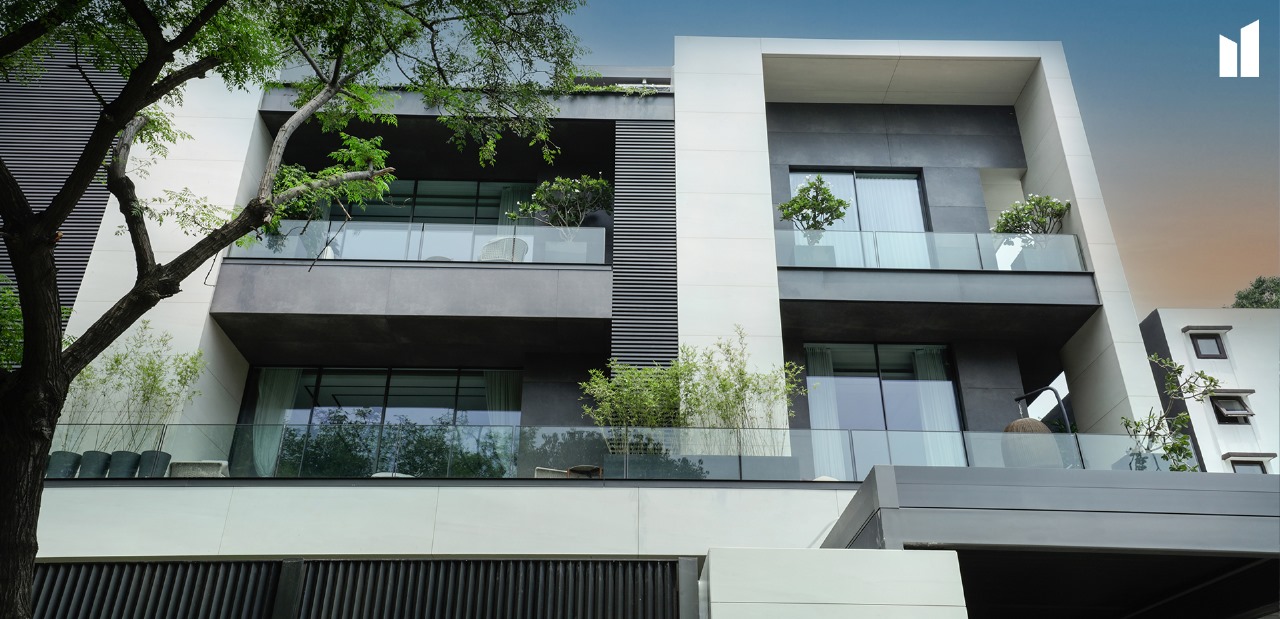Sustainable and eco-friendly building materials for facades
The materials chosen for building facades have a direct bearing on the environment. Opting for sustainable materials means reducing the carbon footprints associated with manufacturing and transportation.

In architecture, the facade of a building serves as its face—a practical shield against elements and the first visual encounter. Beyond appearances, it is a critical component in ensuring the safety and comfort of those within. However, the materials for building facades go beyond aesthetics and functionality; they are also responsible for environmental sustainability.
The importance of selecting exterior facade materials lies in shaping the visual identity of a structure and its ecological impact. Unfortunately, not all materials align with the goal of sustainability. Some choices, while visually appealing and durable, contribute to environmental harm.
Today, we will look at the best sustainable and eco-friendly facade materials. We aim to balance visual appeal and environmental responsibility, recognizing the need to contribute to a greener tomorrow.
Why does sustainability matter in facades?
Understanding why sustainability matters in building facades requires a closer look at the impact of construction choices on the environment and structures’ longevity.
- The materials chosen for building facades have a direct bearing on the environment. Opting for sustainable materials means reducing the carbon footprints associated with manufacturing and transportation.
- By choosing sustainable cladding materials, a building can contribute to its energy efficiency, which is the measure of how effectively it uses energy to provide comfort and functionality. Sustainable cladding materials often include effective insulation properties. Proper insulation helps regulate the temperature within a building, reducing the need for excessive heating or cooling. This, in turn, lowers energy consumption and associated costs.
- Sustainable facade materials are often chosen for their durability and resistance to wear and tear. Buildings constructed with longevity in mind require fewer repairs and replacements over time.
- As climate change brings about more extreme weather events, the resilience of building facades becomes paramount. Building facade materials majorly consist of raw & natural materials that are engineered to prioritize longevity in mind, where they are most apt to withstand the wear and tear of harsh climate conditions.
- In an era where environmental consciousness is on the rise, the choice of sustainable exterior facade materials contributes to a positive public perception. It reflects a commitment to responsible construction practices, aligning with the values of an environmentally aware community.
Sustainable building facades material: Paving the way for green construction
As sustainable construction practices grow louder, we turn towards cladding material that shapes the exteriors of our buildings. Eco-friendly and durability have given rise to sustainable facade materials, each offering a blend of aesthetics, performance, and environmental responsibility.
- Recycled metal panels
Recycled metal panels, crafted from materials like aluminum or steel, are characterized by their high durability, corrosion resistance, and low maintenance. These panels can be manufactured with various finishes, textures, and colors, allowing for a versatile range of design options.
One of the primary benefits of using recycled metal panels is their contribution to resource conservation. By repurposing existing metals, these panels reduce new extraction and processing, lowering the environmental impact of metal production.
Recycled metal panels find application in various architectural styles, especially in modern and industrial settings. Their sleek appearance makes them suitable for commercial, and contemporary residential structures, providing a distinct and visually appealing facade.
- FSC-certified wood
FSC-certified wood, sourced from responsibly managed forests, encompasses a variety of wood options, including cedar, redwood, and tropical hardwoods. The material showcases natural variations in color and grain, lending each facade a unique and authentic look.
Choosing FSC-certified wood supports responsible forestry practices and contributes to biodiversity conservation. This sustainable cladding material is biodegradable and renewable, making it an eco-friendly choice. Beyond its environmental benefits, FSC-certified wood brings warmth and character to building facades, creating a timeless and inviting appeal.
FSC-certified wood is versatile and finds application in various building types. It is well-suited for projects with a natural and rustic aesthetic, making it popular for residential, commercial, and institutional buildings.
- High-Performance Glass
High-performance glass incorporates advanced technologies such as Low-E coatings and double-glazing to enhance insulation. It comes in various tint options, allowing solar control and ample natural light to enter the building.
The primary advantage of high-performance glass lies in its ability to enhance energy efficiency. This glass reduces energy consumption for heating and cooling by minimizing heat transfer and optimizing insulation.
High-performance glass is widely used in contemporary office buildings, residential complexes, and commercial spaces. It is suitable for projects prioritizing transparency and natural light. Its versatility and aesthetic appeal make it a go-to option for modern architectural designs.
- Recycled plastic composite panels
Recycled plastic composite panels combine recycled plastics with wood fibers to create a durable and weather-resistant material. These panels offer diverse design options and finishes, providing versatility for different aesthetic preferences.
The primary benefit of recycled plastic composite panels lies in their use of recycled materials, contributing to reducing plastic waste. With resistance to moisture, insects, and decay, this material ensures longevity and low maintenance. Its durability makes it a sustainable choice for exterior cladding, decking, and fencing.
Recycled plastic composite panels are versatile and suitable for various building types, including residential, commercial, and industrial projects. They are commonly used for exterior applications such as cladding, decking, and fencing, providing an eco-friendly alternative to traditional materials.
- Green Roofs and Living Walls
Green roofs involve vegetation on the roof surface while living walls are vertical installations of plants on building exteriors. Both contribute to insulation, stormwater management, and biodiversity. Green roofs and living walls enhance energy efficiency by regulating temperature and reducing the need for artificial heating and cooling. They also contribute to reducing stormwater runoff and mitigating potential environmental impacts. Beyond functionality, these elements create visually appealing and environmentally friendly building facades.
Green roofs and living walls suit various building types, including residential, commercial, and institutional structures. They are trendy in urban environments, where they help combat heat island effects and contribute to overall sustainability.
Stonelam: The Pinnacle Of Sustainable Building Facades
Stonelam stands out as the pinnacle of choice for sustainable exterior cladding material, a fusion of stone and technological expertise. This innovative cladding material seamlessly combines natural stone’s timeless elegance with advanced technologies’ versatility and performance. Stonelam boasts exceptional durability, lightweight properties, and the ability to replicate the authentic look of natural stones, including marble, granite, etc. Its surface finishes can range from polished to textured, offering a diverse palette for architectural expression. Stonelam emerges as a beacon of sustainability facade materials. Its natural beauty, durability, and manufacturing processes make it a frontrunner in reshaping the narrative of modern architecture.






